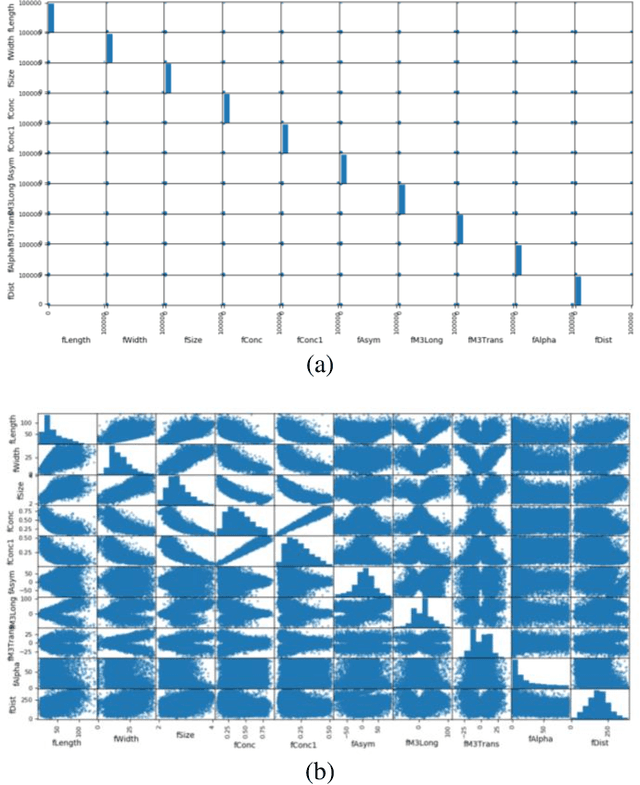Developing a Machine Learning Algorithm-Based Classification Models for the Detection of High-Energy Gamma Particles
Paper and Code
Nov 18, 2021



Cherenkov gamma telescope observes high energy gamma rays, taking advantage of the radiation emitted by charged particles produced inside the electromagnetic showers initiated by the gammas, and developing in the atmosphere. The detector records and allows for the reconstruction of the shower parameters. The reconstruction of the parameter values was achieved using a Monte Carlo simulation algorithm called CORSIKA. The present study developed multiple machine-learning-based classification models and evaluated their performance. Different data transformation and feature extraction techniques were applied to the dataset to assess the impact on two separate performance metrics. The results of the proposed application reveal that the different data transformations did not significantly impact (p = 0.3165) the performance of the models. A pairwise comparison indicates that the performance from each transformed data was not significantly different from the performance of the raw data. Additionally, the SVM algorithm produced the highest performance score on the standardized dataset. In conclusion, this study suggests that high-energy gamma particles can be predicted with sufficient accuracy using SVM on a standardized dataset than the other algorithms with the various data transformations.
 Add to Chrome
Add to Chrome Add to Firefox
Add to Firefox Add to Edge
Add to Edge